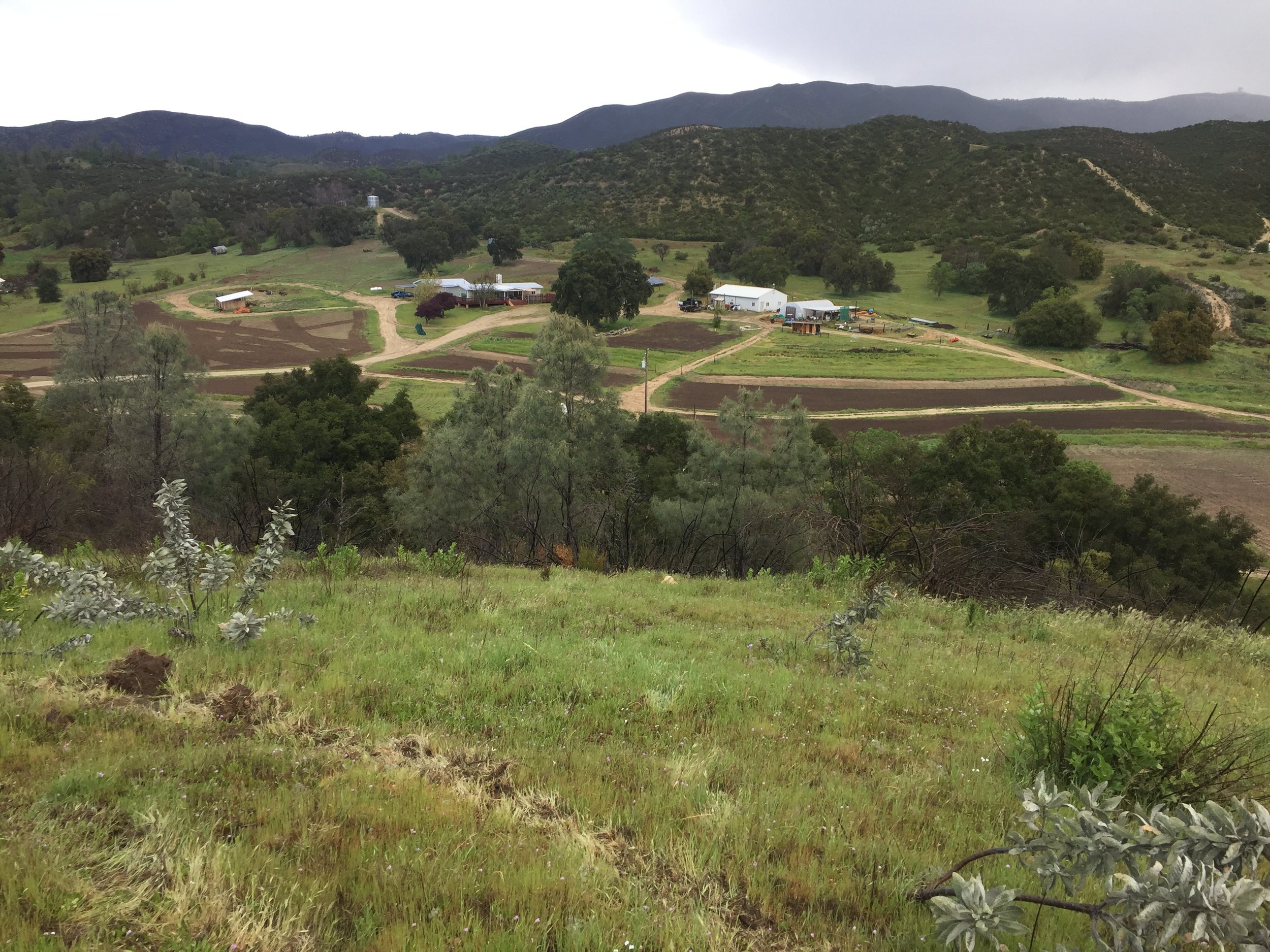Ron Dunham is a Board Member of Lilium Initiative, and serves on the Grower Practitoner Network Committee.
By Andi Houston & Ron Dunham.
1. Tell us a bit about you and your farm.
We have 12.8 acres of slightly rolling land in Santa Margarita, CA. Currently about eight of it is in production. When we purchased the land it had a bed two-room house, an oversized garage, a 2500 sq ft. building and two wells; one of which fed the house.
Since then we have installed four holding tanks for water distribution, three have a pump and pressure tank, and the fourth has enough elevation to provide water at 45psi.
We trenched for underground water over the property so that now there is a spigot or connection for drip available on the property.
We have built a 20x40 hoop house, a 16x30 potting shed, and a 40x60 shade house. And various other outbuildings for storage.
We have set up two drying rooms inside of other buildings, have a dedicated room for processing and medicine making, complete with tincture press and water baths.
2. How did you start growing Chinese medicinal herbs?
I got involved in herbal medicine due to having a chronic illness called multiple chemical sensitivities. I had a thriving carpentry business in Atlanta but due to the pollution in Atlanta and the products used in the construction trade, my immune system finally collapsed and very shortly I was unable to continue working as a carpenter.
Several years later I moved to Asheville, NC, where I was able to attend a school on using plants as medicine. While in the school, I spent a lot of time in the woods hunting medicinal plants and harvesting them for my, and others’ use. My first experience with forest farming was planting ginseng and goldenseal on various properties around the Blue Ridge Mountains. I would like to go back to harvest soon as the ginseng should be well mature enough now. The goldenseal taking fewer years. Learning about adaptogens and spending a lot of time hiking throughout the Blue Ridge Mountains, I was able to go out more into the world without the weeks or months-long suffering of exposure to chemicals.
3. What Chinese medicinal herb crops have you tried and failed?
When we moved to California and started this farm, I was told that there are many Chinese herbs that grow in the climate and elevation of our farm. As it turns out, the consultant was not worth her salt and several recommended plants did not thrive. Such as ox knee, chameleon plant, and several others. It was either that the plants couldn’t take the full sun and 100 to 110-degree weather, or the frosts. Some of the seed germination only resulted in a few plants, not the 99% promised.
4. What Chinese medicinal herb crop has been your greatest success and how (best return on investment, best quality, most challenging, etc)?
There are several that are doing very well. Chrysanthemum morifolium (bo ju hua), blackberry Lily (she gan), Anemarrhena asphodeloides (zhi mu), and safflower (hong hua) are all very easy to grow here and thrive. I have also planted many hardy rubber trees and they are growing well. These require ten years of growth before they can be tapped for the sap.
5. How did you get involved in Lilium Initiative?
While I was still in North Carolina, I was talking to people about starting a cooperative for herbs, or something along these lines. When I was told that LI was organizing, I hopped on board to assist in getting it off the ground. I have supported it and participated in its growth since the beginning.
6. What is one piece of advice for beginning Chinese medicinal herb farmers?
For the new growers, my advice is to be prepared for spending a few years just getting the property set up, spending time trialing different herbs to find if they not only grow on your land, but thrive. The point of growing any herb for medicine is to make powerful medicine, to give it conditions that cause it to produce the chemical constituents in quantities that make it as close to wild-grown as possible, so that it is what the practitioners are using.
Once the trials have been completed and you know what you can grow, decide how much of that plant to grow. Using its commercial value, or how much it is used in Chinese medicine as your litmus to how much you grow. I am of the mind that even if a plant is not used a lot in Chinese formulas, if it is used and I can grow it, I will make it available to practitioners.
Lastly, get everything in writing. Ask a lot of questions of your suppliers. Everything from availability, the lineage, where it came from and how long has it been grown in the U.S. Getting enforceable contracts rather than handshakes on everything from builders to customers. There is so much. Too much of your time can be spent with the knucklehead stuff instead of doing what you are there to do, which is to grow plants for medicine.






























